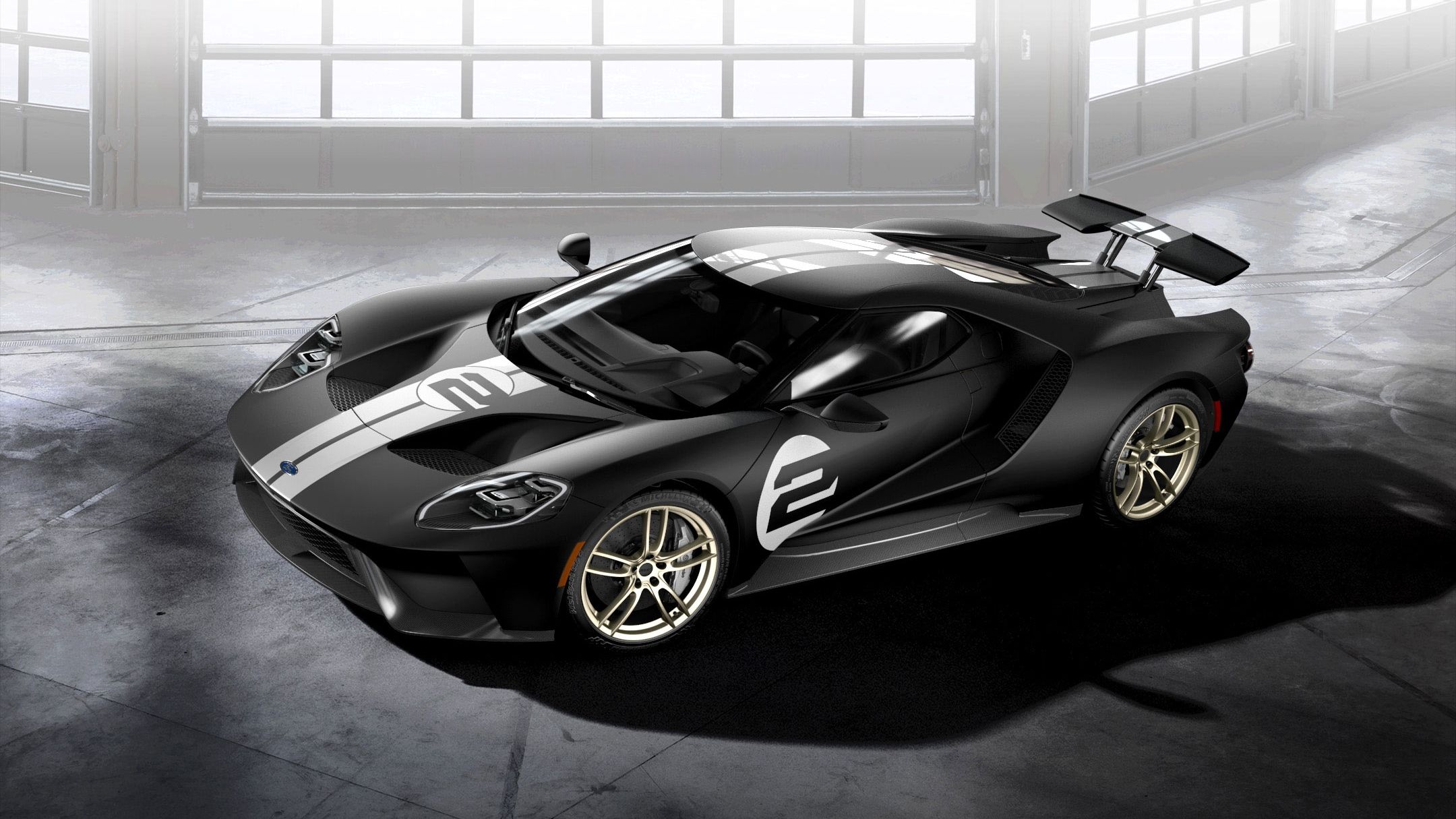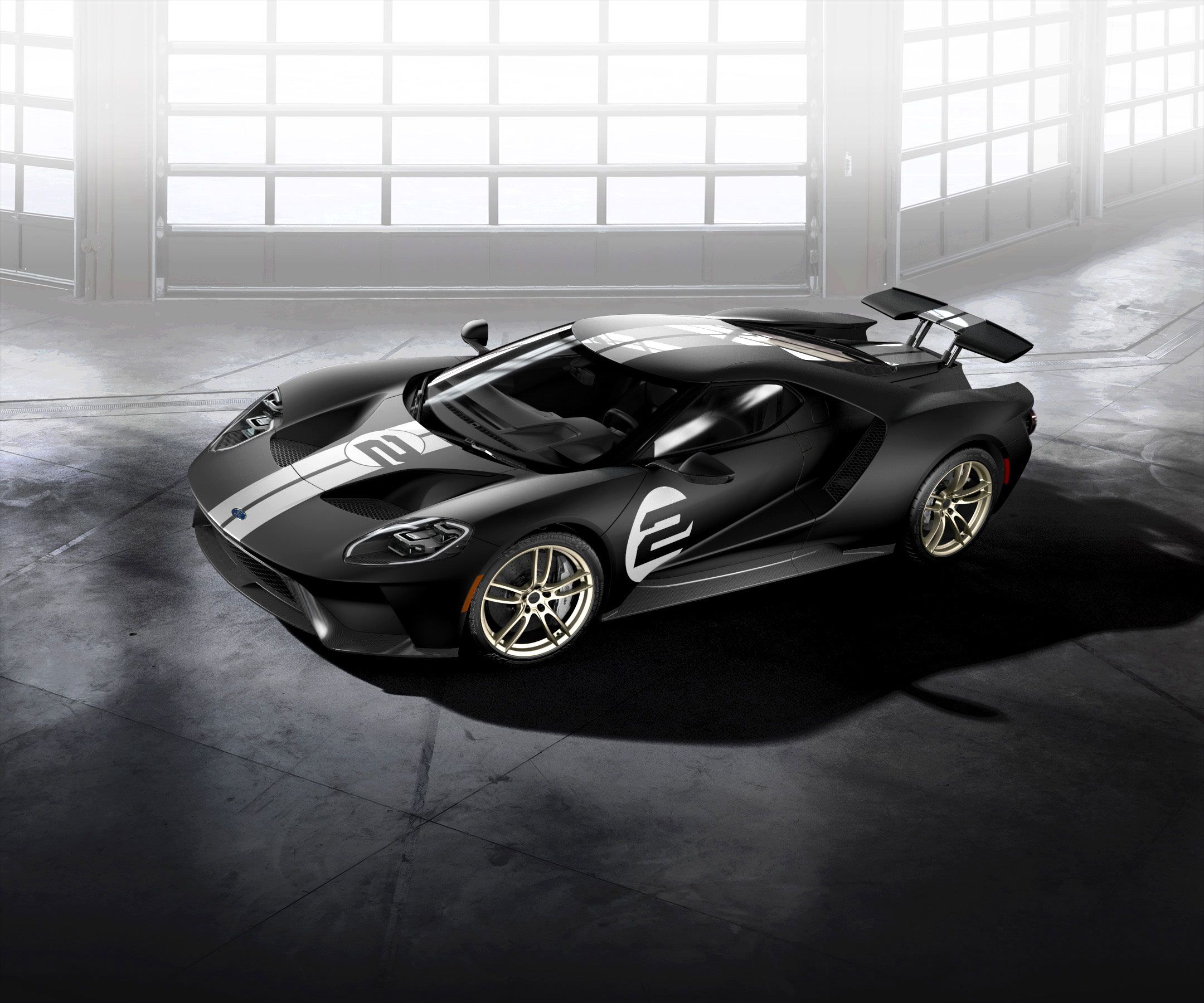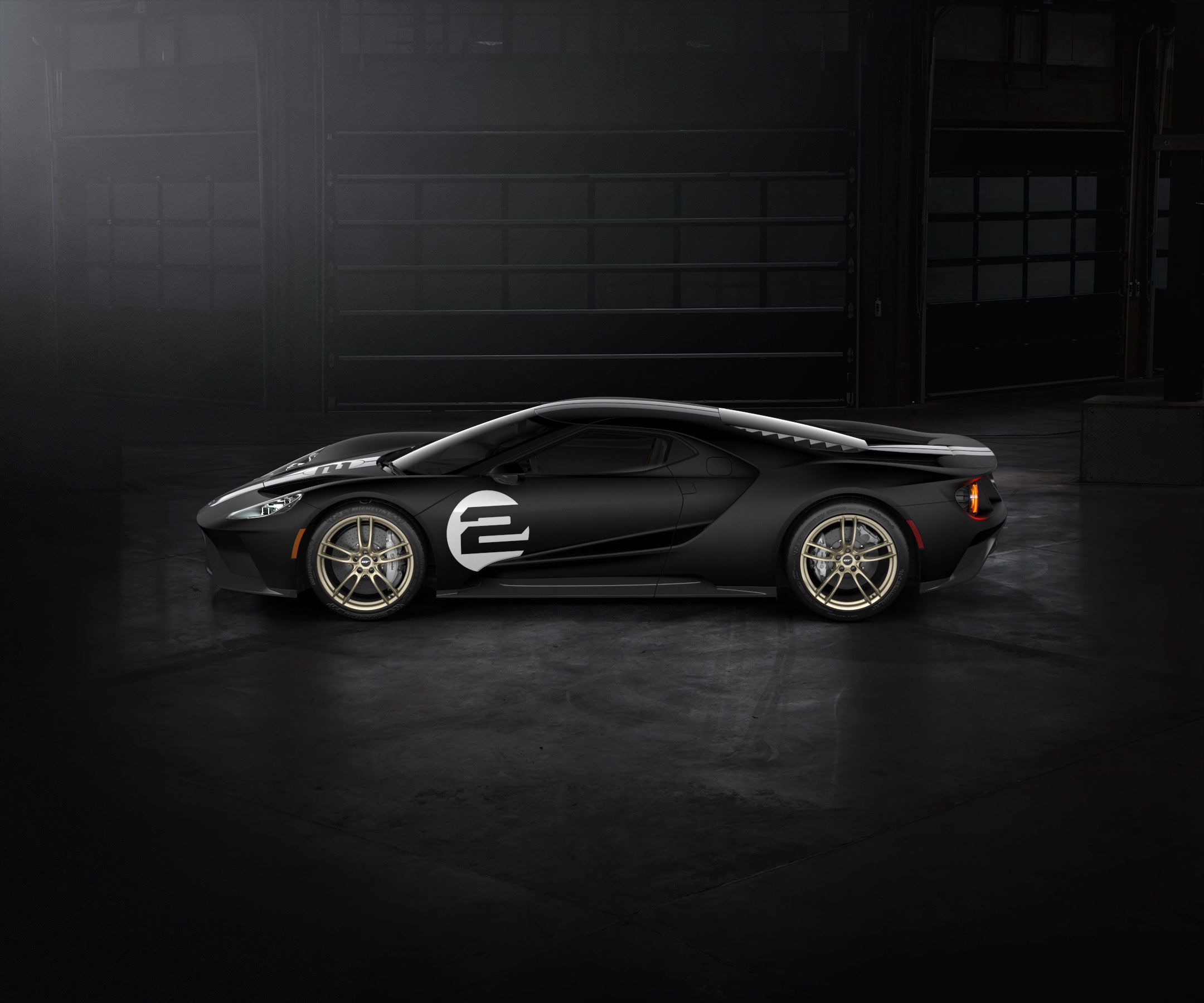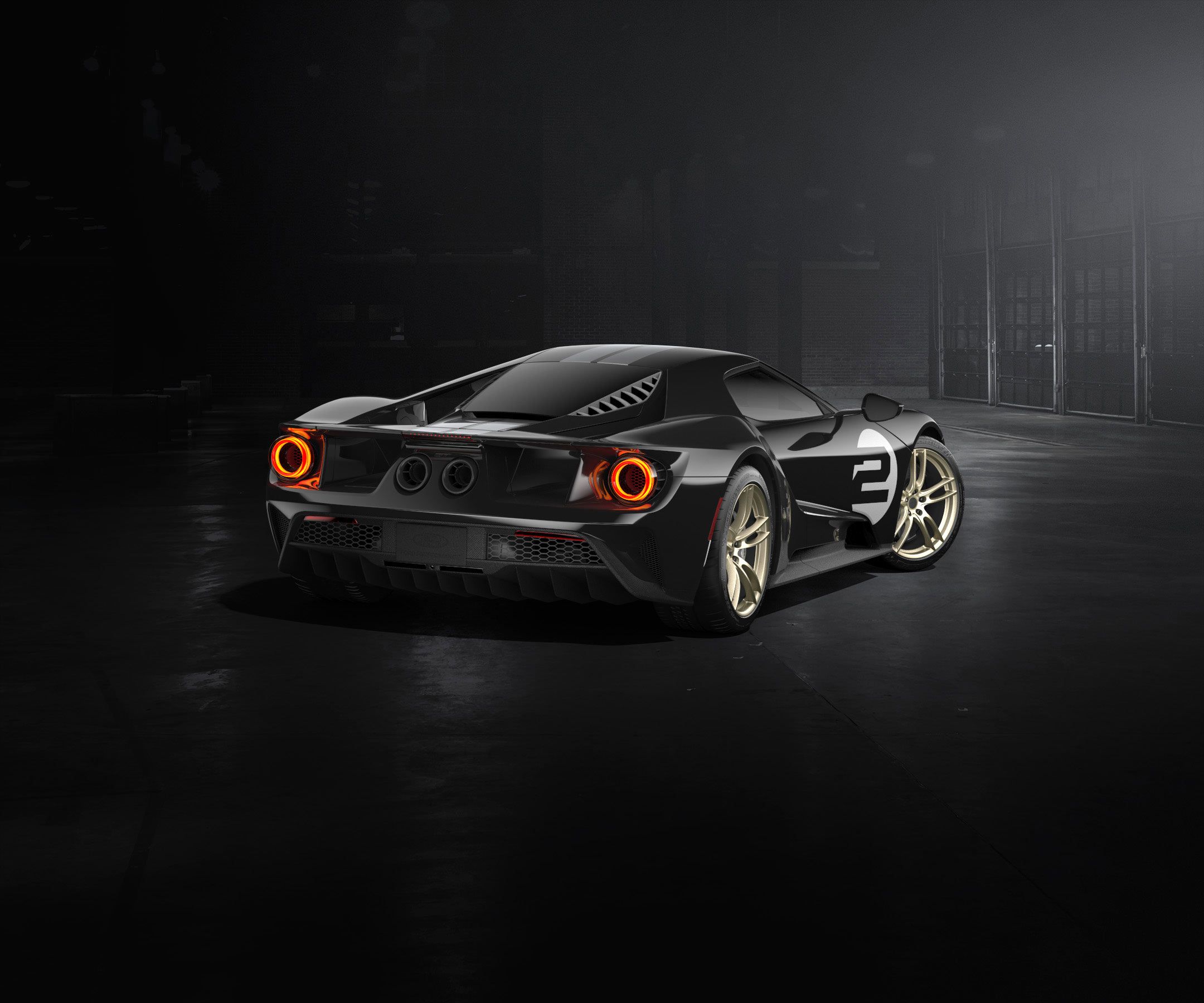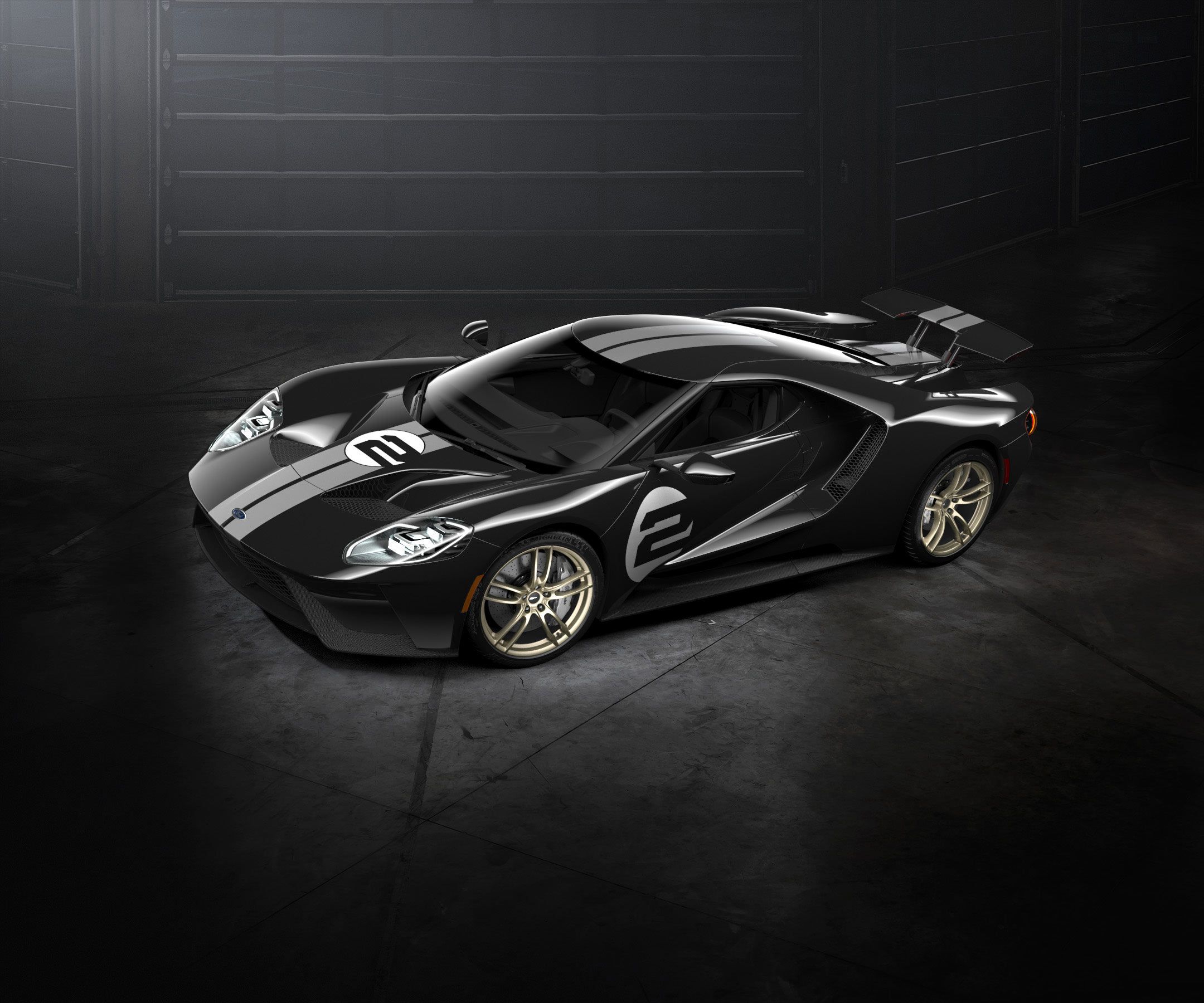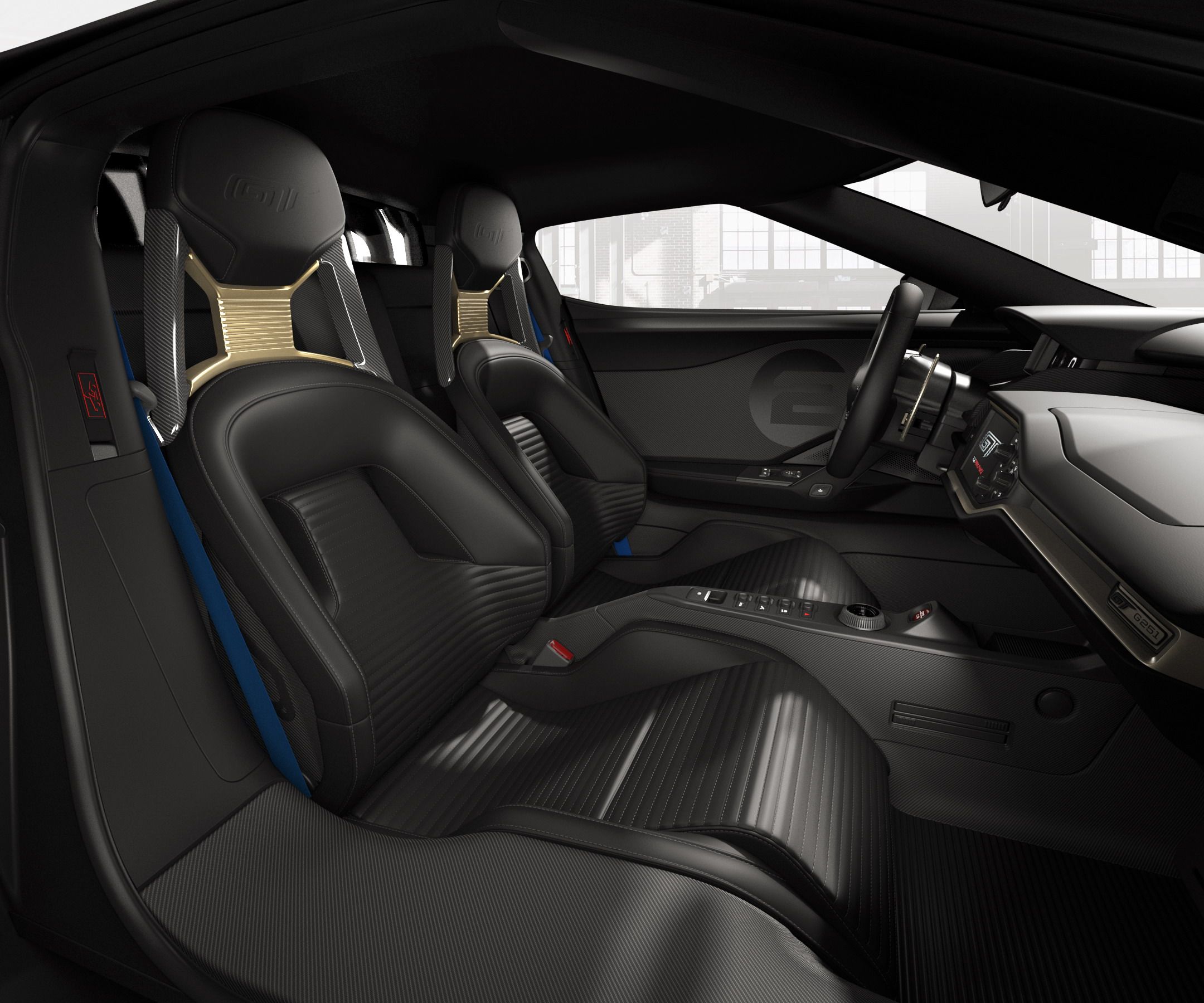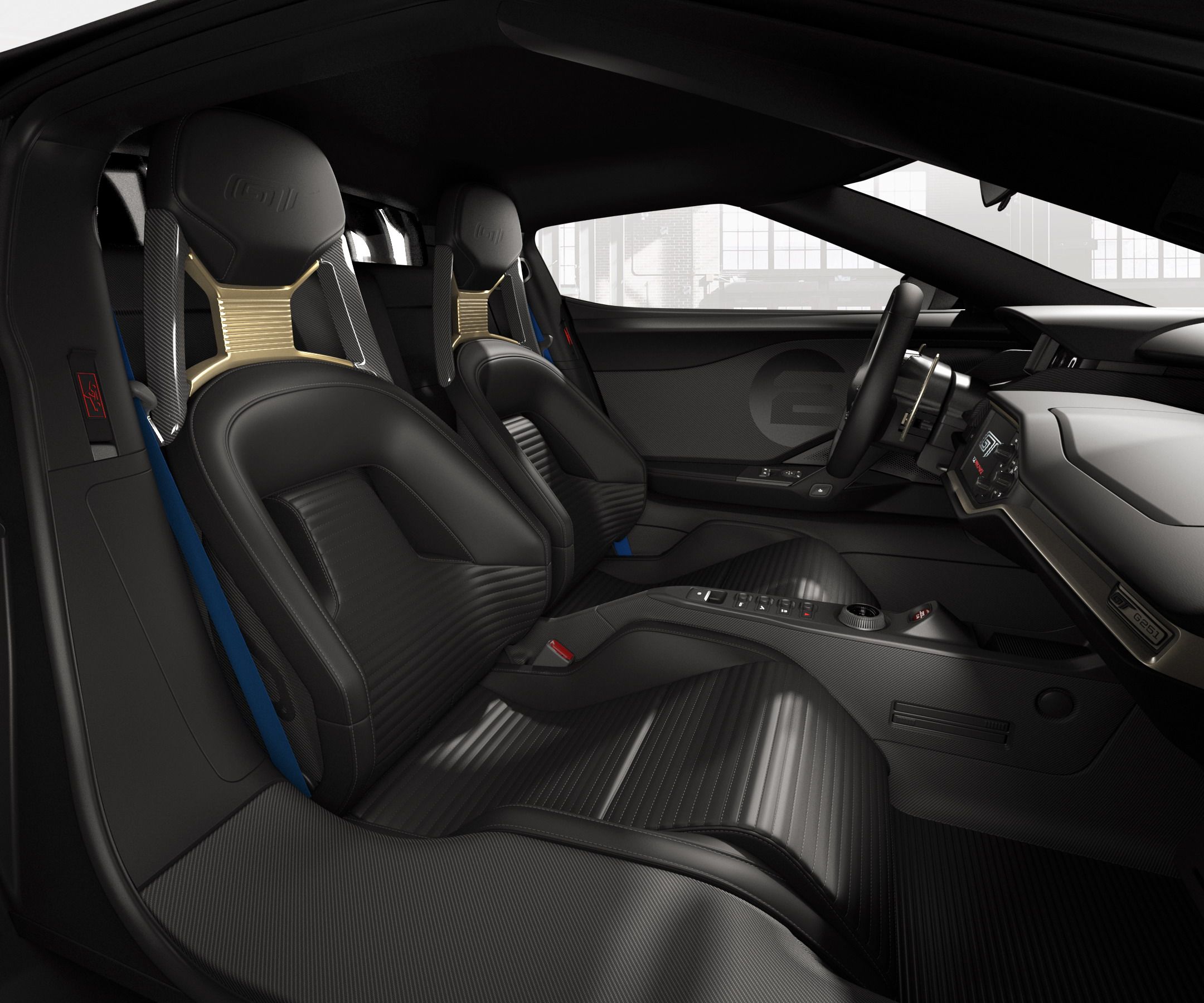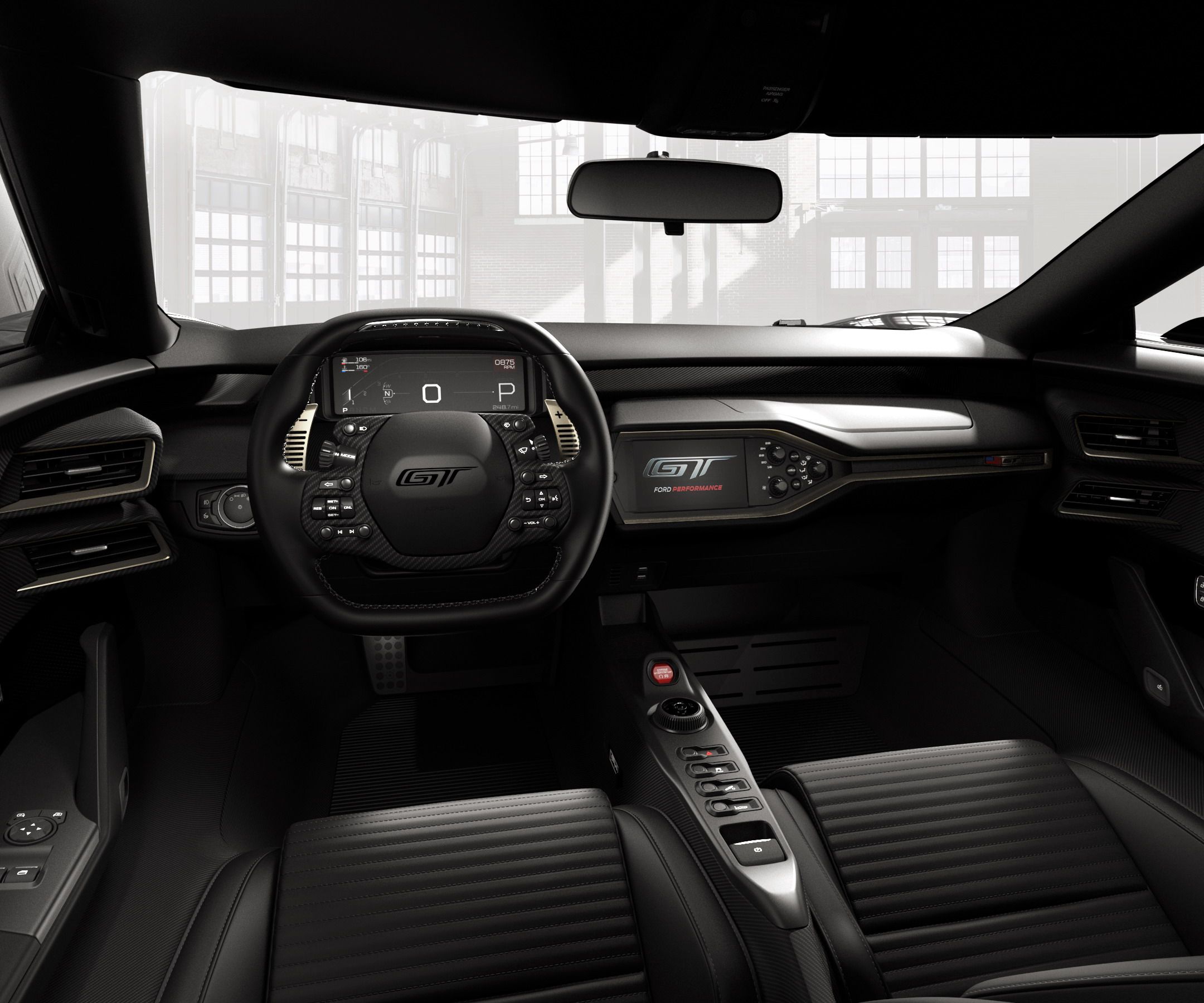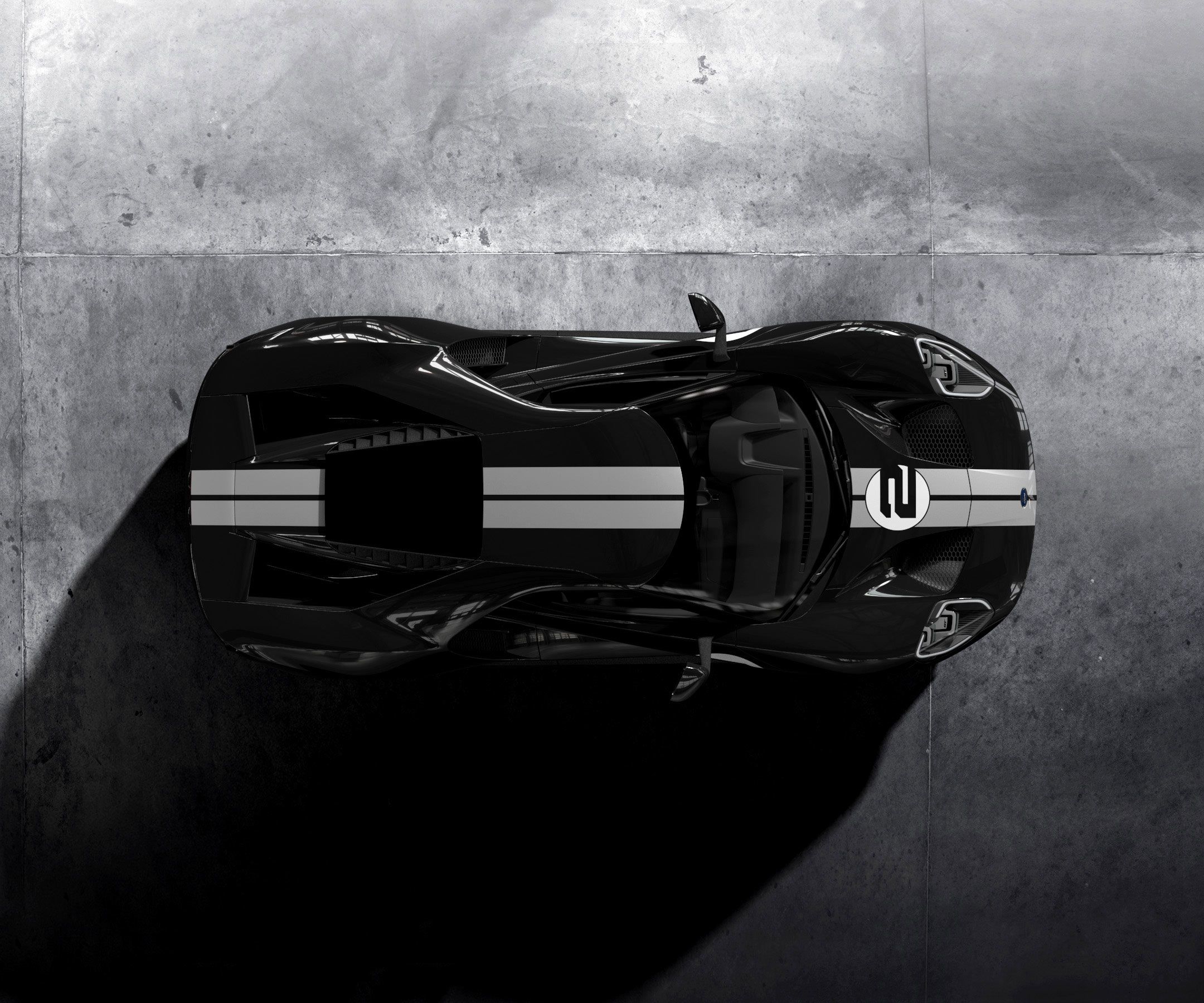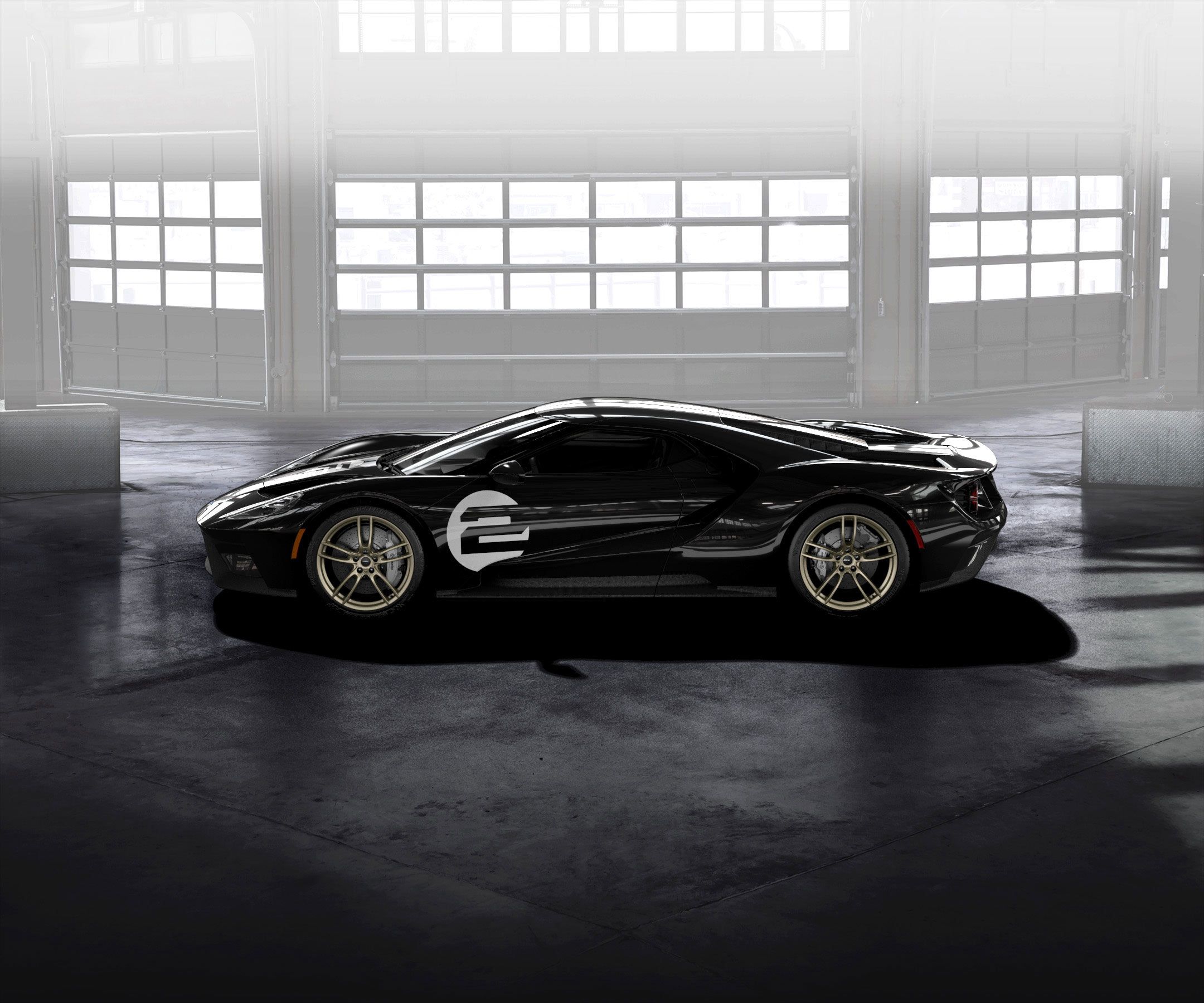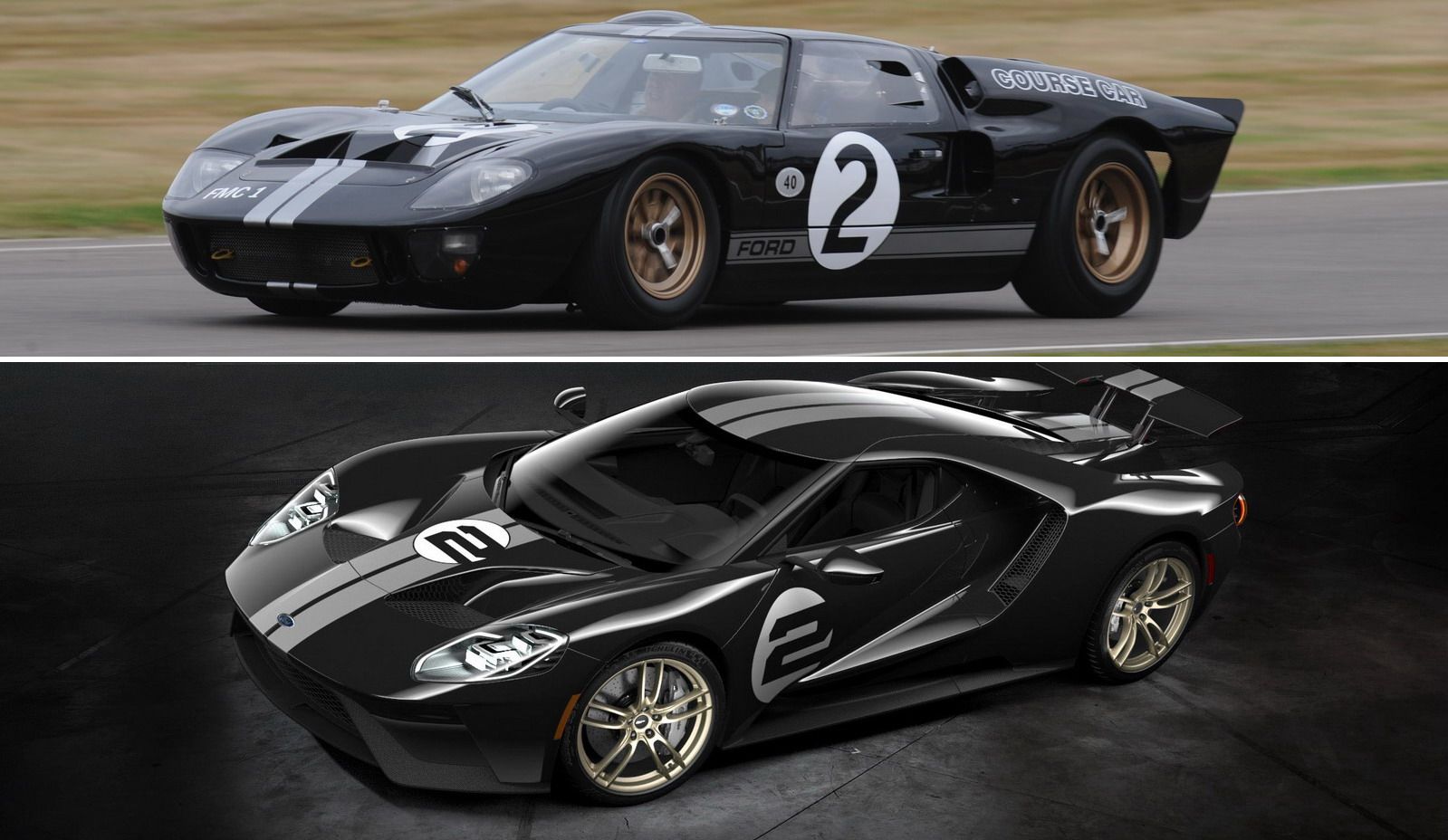The second-generation Ford GT was launched at the 2015 Detroit Auto Show. First showcased in prototype form, the supercar was put into production in late 2016 for the 2017 model year. The GT name returned after nearly 10 years since Ford discontinued the first-generation supercar, which took inspiration from the GT40 race car of the 1960s. Having won its first 24 Hours of Le Mans race with the GT40 in 1966, FoMoCo used the second-gen GT to celebrate 50 years since its iconic success. Unlike its predecessors, which used both naturally aspirated and supercharged V-8 engines, the new GT gets its juice from a twin-turbo, 3.5-liter V-6 Ford had originally developed for racing. Production of the supercar is limited around 250 units annually.
Having scored a class win with its brand-new race-spec GT at the 2016 24 Hours of Le Mans, Ford continues its 50th anniversary Le Mans celebrations with a limited-edition road car that pays tribute to the vehicle that took the checkered flag in first place back in 1966. Exactly 50 years ago, Ford scored a historic 1-2-3 at Le Mans, defeating Ferrari and achieving the very goal the GT40 was built for. The first car to cross the finish line was a black and silver coupe driven by Bruce McLaren and Chris Amon, and the Blue Oval is now offering a modern-day replica to enthusiasts who want to own a piece of Ford Racing history.
“Celebrating the anniversary of Ford’s historic victories at Le Mans has always been a part of the return of the Ford GT,” said Raj Nair, Ford executive vice president, product development, and chief technical officer. “The 2017 Ford GT ’66 Heritage Edition is a stunning tribute to the car that kicked off Ford’s string of Le Mans victories in 1966.”
Continue reading to learn more about the Ford GT ’66 Heritage Edition.
2017 Ford GT ’66 Heritage Edition
- Make: Array
- Model: 2017 Ford GT ’66 Heritage Edition
- Engine/Motor: V6
- Horsepower: 600
- [do not use] Vehicle Model: Array
What makes the Ford GT ’66 Heritage Edition special
On the outside, the Ford GT has been painted to resemble the No. 2 GT40 MkII race car that won the 24 Hours of Le Mans in 1966. If you're not a big fan of vintage racing, the car driven by Bruce McLaren and Chris Among was painted black with a pair of silver stripes running from the nose toward the deck lid. Ford used the same livery for the modern GT, but offers its familiar Shadow Black in either gloss or matte, so customers can choose between something similar to the original car or a more modern matte finish that goes well with the exposed carbon-fiber package that comes with this limited-edition model. The black paint is complemented by silver stripes and Frozen White No. 2 graphics on the hood and the doors. Rounding off the exterior is a set of 20-inch, one-piece forged aluminum wheel in gold satin clearcoat and with black lug nuts. Although the twin-five-spoke design has nothing in common with the racing rims of the original GT40, the gold color is true to the car that won the iconic 24 Hours of Le Mans race.
The interior of the '66 Heritage Edition also received special features, starting with the carbon-fiber seats wrapped in Ebony leather and equipped with pillowed inserts and plow-through stitching. It would have been nice for Ford to replicate the GT40's famous brass eyelets into the upholstery – as it did with the previous GT – but the pillowed inserts are enough to give the interior a vintage-style appearance. The instrument panel, pillars, and headliner also features an Ebony-leather wrap, while the trim on the instrument panel, the seat’s X-brace and shift paddles are finished in gold. The seats' head and restraints and steering wheel are debossed with the "GT" logo. Like the 1966 race car, the steering wheel and the seat belts have a unique blue webbing. Rounding off the cockpit is a serialized identification plate, "#2" door panel graphics, and exposed matte carbon fiber door sills and center console.
Not surprisingly, the '66 Heritage Edition is a standard GT under the hood, meaning it uses Ford's race-derived 3.5-liter EcoBoost V-6, which generates in excess of 600 horsepower. All that power travels to the rear wheels through a seven-speed, dual-clutch transaxle, making it the first GT ever to not use a manual gearbox.
No word on pricing yet, but with the standard GT said to fetch around $400,000 before options, the '66 Heritage Edition could cost in excess of $450,000. Ford said it will be built in "limited quantities," but gave no actual figures. I expect a production run of 66 unit in order to match the company's most important year in motorsport.
Ford GT
Nine years after it discontinued the first-gen GT, the spiritual successor of the iconic GT40 race car, Ford introduced the second-generation GT at the 2015 Detroit Auto Show. Initially just a non-running prototype, the GT began hitting public roads months later, as Ford began testing the production car. Although the first GTs won't reach their customers until late 2016, the supercar has already spawned a full-fledged race car that has been battling for glory in GT classes in North America in Europe. Its most important achievement as of 2016 is a class win at the 2016 24 Hours of Le Mans, where just like in 1966, it crossed the finished line ahead of arch-rival Ferrari.
Read our full review on the Ford GT here.

